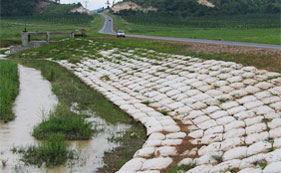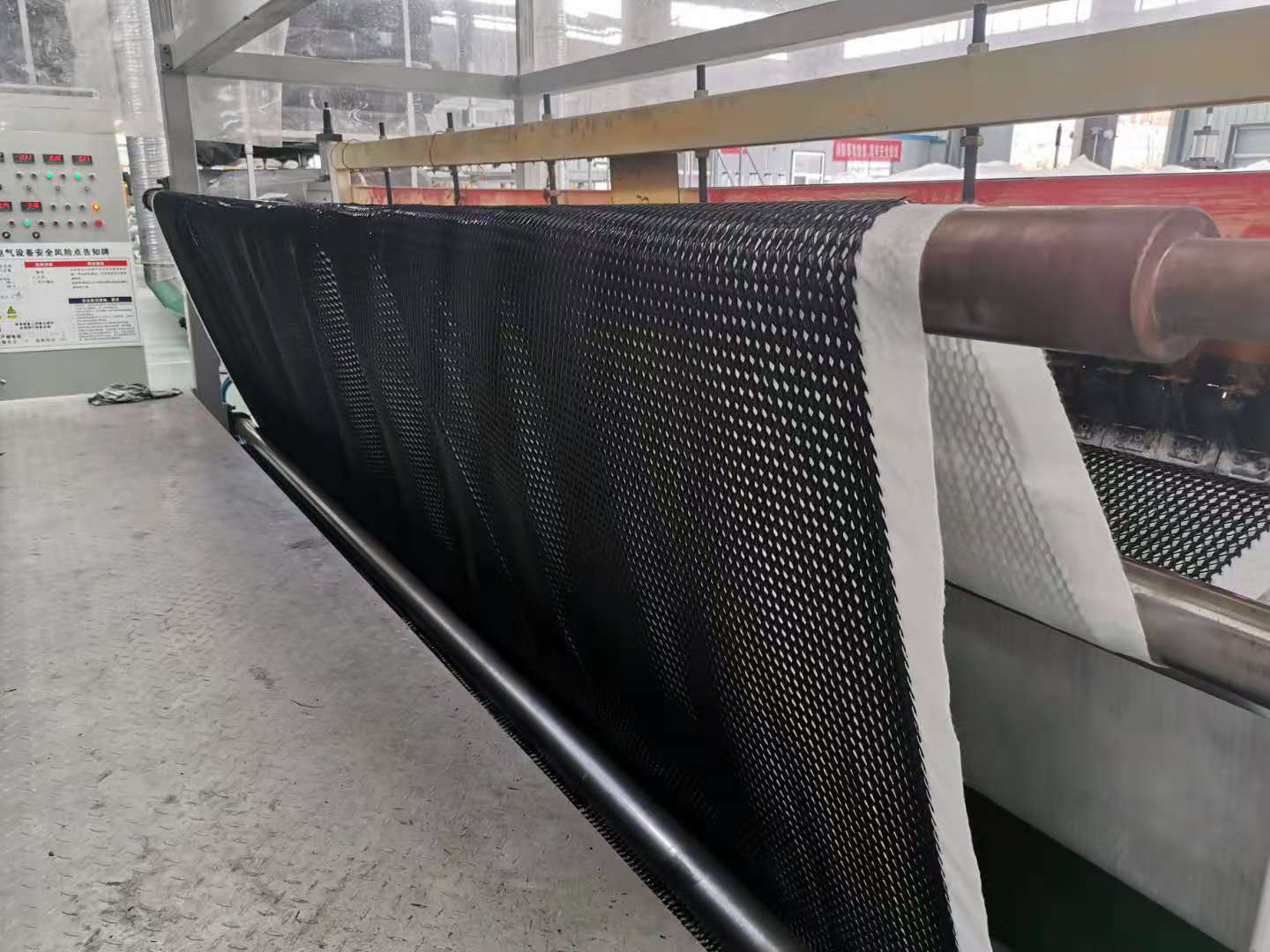
 Back to List
Back to List

Drainage network (also known as geotechnical drainage board, tunnel drainage board, drainage board) refers to the three-dimensional structure of the plastic network with two-side adhesive permeable geotextile, can replace the traditional sand and gravel layer, mainly used for landfill, roadbed and tunnel wall drainage materials.
In the transportation infrastructure such as railway and highway, the safety and service life of the project are closely related to its own drainage system, among which geosynthetics are an important part.
The three - dimensional drainage network is a new type of geosynthetics.
The composite structure is a three-dimensional geogrid core with needled perforations on both sides of the non-woven geotextiles.
The 3D geogrid core consists of a thick vertical rib and an oblique rib at the top and bottom.
Ground water that quickly drains the road also has a pore-maintenance system of its own that blocks capillary water under high loads.
At the same time, it can also play the role of isolation and foundation reinforcement.
A new geosynthetic material.
Function characteristics
1. It is laid between the foundation and the bottom foundation for discharging the water between the foundation and the bottom foundation, blocking the capillary water and effectively combining it with the edge drainage system.
This structure automatically shortens the drainage path of the foundation, greatly reducing the drainage time, and reduces the amount of selected foundation materials used (materials with more fine material and lower permeability can be used).
It can extend the life of the road.
2. Laying drainage network in the base layer can prevent the base fine material from entering the base layer (that is, it plays an isolation role).
The aggregate base will enter the upper part of the geogrid to a limited extent.
Thus, a composite geodetic drainage network also has the potential to limit the lateral movement of the aggregate base in a manner similar to that of a geogrid reinforcement.
Generally speaking, the tensile strength and rigidity of composite geodetic drainage network are better than many geogrids used for foundation reinforcement, and this restriction will improve the supporting capacity of foundation.
3, road aging, crack formation, most of the rain will enter the section.
In this case, the drainage net is laid directly under the pavement instead of a drainable foundation.
A drainage net can collect water before it enters the foundation/base.
And the bottom of the drainage network can be coated with a film to further prevent water from entering the foundation.
For rigid road systems, this structure allows the road to be designed with a high drainage coefficient of Cd.
Another advantage of this structure is that it may allow the concrete to hydrate more evenly (research on the extent of this advantage is ongoing).
For both rigid road and flexible road system, the structure can extend the service life of the road.
4. In northern climatic conditions, laying drainage network can help to reduce the impact of frost heaving.
If the freezing depth is very deep, the geogrid may be laid on the shallower part of the base as a capillary block.
In addition, it is often necessary to replace with a granular base that is not prone to frost heaving, extending down to the freezing depth.
Backfill that is prone to frost heaving can be filled directly onto the drainage network surface to the ground line.
In this case, the system may be connected to a drainage outlet to bring the water table at or below this depth.
This could potentially limit the development of ice crystals without limiting traffic loads during spring melting in cold regions.
Seams and laps
1. Adjust the direction of geosynthetics so that the length of the material roll is perpendicular to the road.
2. The composite geotechnical drainage network must be connected at the end, and the geotechnical cloth on the adjacent geotechnical core should be overlapped along the material.
3. The geosynthetics core of the adjacent geosynthetics roll is connected with a white or yellow plastic buckle or polymer tape to connect the material roll.
Tape each other every three feet along the length of the material roll.
4. The direction of the overlapped geotextiles shall be consistent with the direction of the packing.
If the geotechnical material is laid between the foundation/base and the base, continuous wedge welding, flat end welding or suturing is performed to secure the overlapped geotechnical fabric.
For sutures, it is recommended to use a flat seam or a general seam to meet minimum stitching length requirements.